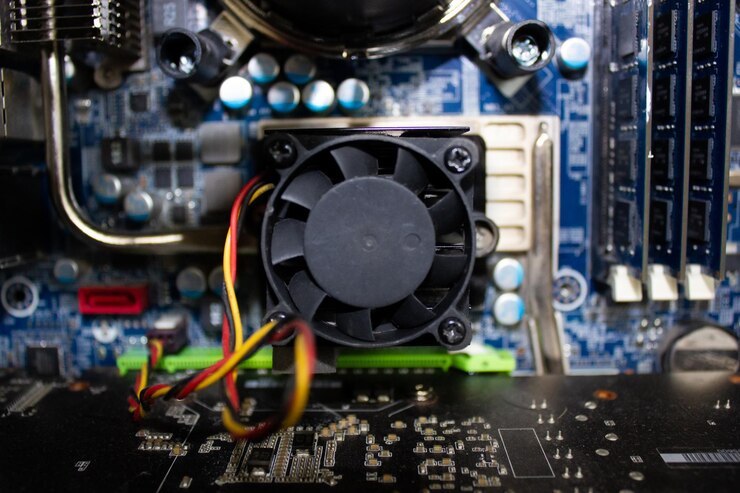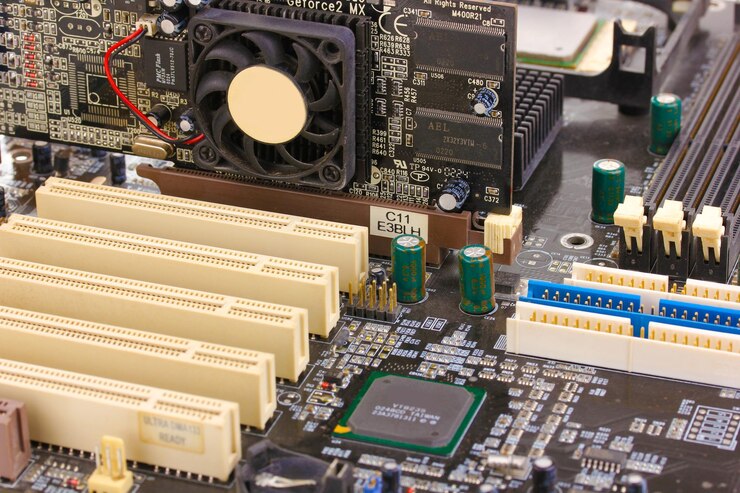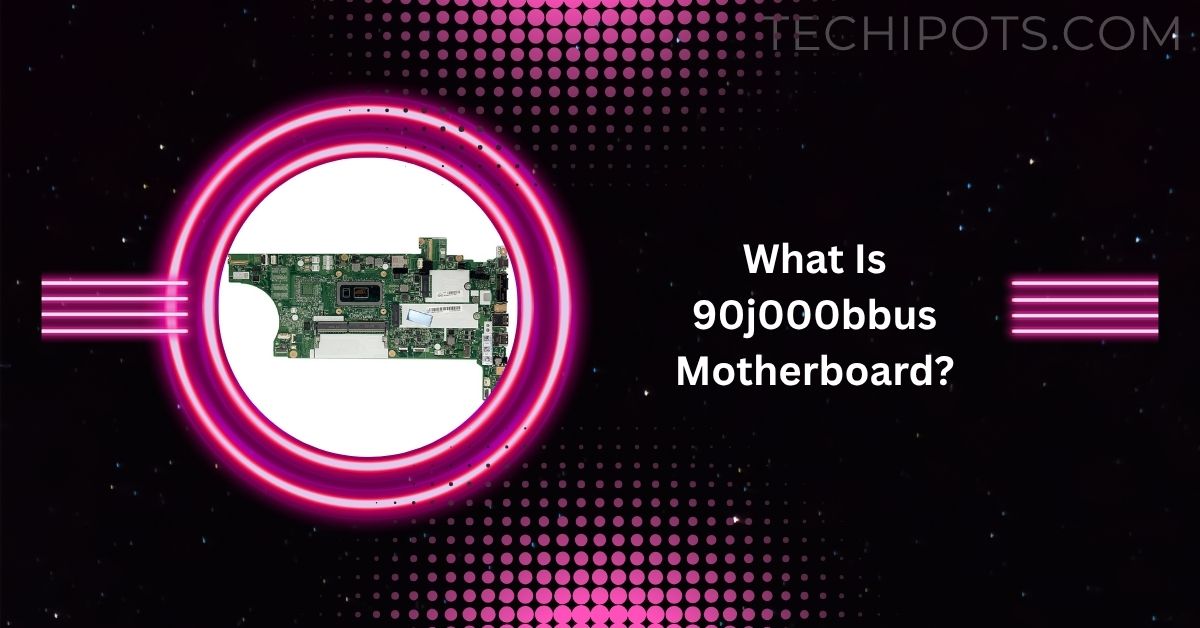The term “90j000bbus motherboard” appears to be a specific query that may relate to a motherboard model, part number, or identifier used in computer hardware discussions.
The 90J000BBUS is not a motherboard but the model number for a Lenovo IdeaCentre 510A-15ARR desktop with an AMD motherboard.
This article explores the potential context of this term, diving into what a motherboard is, how to identify one, why specific model numbers matter, and how to interpret or troubleshoot queries like “90j000bbus.” Additionally, it provides actionable insights for readers seeking to understand or identify their motherboard for upgrades, repairs, or compatibility checks.
Understanding Motherboards: The Backbone of a Computer
A motherboard, often referred to as the mainboard or logic board (in the case of Macs), is the central circuit board in a computer that connects all hardware components, including the CPU, RAM, storage drives, graphics card, and other peripherals.
It serves as the communication hub, facilitating data transfer between these components through buses, chipsets, and sockets.
The motherboard determines the compatibility of components, such as which processors or memory types can be used, and supports features like USB ports, PCIe slots, and networking capabilities.

Motherboards come in various form factors (e.g., ATX, Micro-ATX, Mini-ITX), chipsets (e.g., Intel Z790, AMD B650E), and models tailored to specific processors or use cases, such as gaming, content creation, or budget builds.
For instance, ASUS ROG motherboards are designed for overclocking and gaming, while their Prime series targets general users with robust performance. Knowing the exact motherboard model is crucial for upgrades, driver updates, BIOS flashing, or troubleshooting hardware issues.
The Mystery of “90j000bbus”
The identifier “90j000bbus” does not directly match any known motherboard model in the available data from major manufacturers like ASUS, Gigabyte, ASRock, or MSI, nor does it appear in motherboard databases or hardware review sites like MotherboardDB, PCPartPicker, or Tom’s Hardware. It’s possible that “90j000bbus” could be a misinterpretation, typo, or partial part number for a specific motherboard model, or it might refer to a component related to a motherboard, such as a chipset, SKU, or serial number used internally by a manufacturer or retailer.
Possible Interpretations
- Typographical Error or Misread Part Number: The string “90j000bbus” might be a misread or mistyped model number. For example, it could resemble part numbers used by manufacturers like ASUS, which often include alphanumeric codes like “90MB” in their motherboard SKUs (e.g., ASUS Prime Z790-A, model 90MB18). A user might have misread a label or documentation, mistaking a similar code for “90j000bbus.”
- OEM or Prebuilt System Identifier: Some prebuilt systems from companies like Dell, HP, or Lenovo use custom motherboards with unique part numbers that may not be publicly documented. “90j000bbus” could be an internal identifier for a motherboard in a specific prebuilt PC model.
- Regional or Retail-Specific Code: Certain motherboards have region-specific or retailer-specific SKUs. For instance, a motherboard sold in a particular market (e.g., the U.S., as suggested by “us” in the code) might have a unique identifier not widely listed in global databases.
- Component or Accessory Reference: The code might not refer to a motherboard itself but to a related component, such as a BIOS chip, a specific I/O shield, or a firmware version associated with a motherboard.
Given the lack of direct matches in search results, users searching for “90j000bbus” are likely trying to identify a motherboard in their system or confirm compatibility for upgrades. Below, we outline how to identify a motherboard and why this matters.
How to Identify Your Motherboard
If you’re trying to determine whether “90j000bbus” corresponds to your motherboard, several methods can help you identify the exact model without relying solely on a potentially ambiguous code. These methods are particularly useful for upgrading components, replacing a faulty motherboard, or updating drivers/BIOS.
1. Using Windows Built-In Tools
- Command Prompt:
- Press Windows + R, type cmd, and press Enter to open the Command Prompt.
- Type wmic baseboard get product, manufacturer, version, serialnumber and press Enter.
- This command displays the motherboard’s manufacturer, product name, version, and serial number. Check if the output matches or resembles “90j000bbus.”
- System Information:
- Press Windows + R, type msinfo32, and press Enter.
- In the System Information window, navigate to “System Summary.”
- Look for entries like “Motherboard Manufacturer” or “BaseBoard Model.” Note that this method may not always provide the exact model number, especially for older systems.
2. Third-Party Software
Software like CPU-Z or Speccy can provide detailed hardware information, including the motherboard’s manufacturer and model. CPU-Z is free and widely recommended:
- Download CPU-Z from its official website.
- Install and open the program.
- Navigate to the “Mainboard” tab to view the motherboard’s manufacturer, model, and chipset.
3. Physical Inspection

If software methods are inconclusive, you can check the motherboard physically:
- Power off and unplug your computer.
- Open the case (consult your PC’s manual to avoid damaging components).
- Look for a printed label or silkscreened text on the motherboard, typically near the CPU socket, RAM slots, or PCIe slots. The model number (e.g., ASUS ROG Strix Z790-E) or a part number (e.g., 90MB1A) should be visible.
- Compare the printed code to “90j000bbus” to see if it’s a partial match.
4. Check Documentation or Retail Packaging
If you have the original box, manual, or purchase receipt for your motherboard or PC, these often list the exact model number or part number. For prebuilt systems, check the manufacturer’s website or support portal using your PC’s serial number.
Why Identifying the Motherboard Matters
Knowing your motherboard’s model is essential for several reasons:
- Compatibility: The motherboard dictates which CPUs, RAM, and GPUs are compatible. For example, an Intel Z790 motherboard supports 12th, 13th, and 14th Gen Intel CPUs, while an AMD B650E supports Ryzen 7000 series CPUs.
- Upgrades: Upgrading components like SSDs or RAM requires confirming socket types, slot availability (e.g., PCIe 5.0 M.2 slots), and power delivery capabilities.
- Driver and BIOS Updates: Manufacturers release drivers and BIOS updates specific to each motherboard model to improve performance, stability, or compatibility. An incorrect model number can lead to installing the wrong firmware, potentially bricking the board.
- Troubleshooting: If your system has issues (e.g., boot failures, USB port problems), knowing the motherboard model helps diagnose hardware-specific problems or check for known issues on forums like Reddit.
Potential Matches and Alternatives
While “90j000bbus” doesn’t directly match any known motherboard, it may resemble part numbers from manufacturers like ASUS, whose motherboards often have codes starting with “90M” or similar. For example:
- ASUS Prime Series: Models like the ASUS Prime Z790-A (part number 90MB18) are popular for Intel-based builds and feature robust power delivery and USB 3.2 Gen 2 ports.
- Gigabyte Aorus Series: The Gigabyte B650E Aorus Master (part number close to 90-series in some regions) supports AMD Ryzen 7000 CPUs with PCIe 5.0 M.2 slots and multiple USB ports.
If “90j000bbus” is part of a prebuilt PC, contacting the system’s manufacturer (e.g., Dell, HP) with the PC’s serial number may clarify the motherboard’s identity. Alternatively, searching for the code on niche hardware databases like TheRetroWeb or posting on communities like r/buildapc could yield insights from other users.
Troubleshooting the Search for “90j000bbus”
If you’re searching for “90j000bbus” to identify a motherboard, consider these steps:
- Double-Check the Code: Ensure the code is correct by rechecking labels, documentation, or software outputs. A single misread character (e.g., “0” vs. “O”) can lead to confusion.
- Broaden the Search: Use partial strings (e.g., “90j000”) or combine with the manufacturer’s name (e.g., “ASUS 90j000”) to find similar models.
- Contact Support: If the motherboard is from a prebuilt system, contact the PC manufacturer’s support with the system’s serial number.
- Use Hardware Forums: Post the code on forums like Reddit’s r/buildapc or TechSpot, where enthusiasts may recognize obscure part numbers.
FAQs
What is the 90j000bbus motherboard?
The 90j000bbus is likely a misread or OEM-specific motherboard part number, not directly matching known models from major manufacturers.
How can I identify my motherboard if it’s labeled 90j000bbus?
Use CPU-Z, Command Prompt (wmic baseboard), or check the motherboard physically for printed model numbers or part codes.
Is the 90j000bbus compatible with modern CPUs?
Without a confirmed model, compatibility is unclear; identify the exact motherboard to check CPU socket and chipset support.
Where can I find drivers for the 90j000bbus motherboard?
Identify the motherboard model using software or physical inspection, then download drivers from the manufacturer’s official website.
Could 90j000bbus be from a prebuilt PC?
Yes, it may be an OEM part number from a prebuilt system; contact the PC manufacturer for details.
Conclusion
The “90j000bbus motherboard” query likely stems from a need to identify a specific motherboard model, but the exact code doesn’t appear in standard motherboard databases or reviews. It may be a misread part number, an OEM-specific identifier, or a regional SKU. To resolve this, users should leverage tools like Command Prompt, CPU-Z, or physical inspection to confirm their motherboard’s model. Understanding your motherboard is critical for ensuring compatibility, performing upgrades, and maintaining system performance. If the code remains elusive, reaching out to the PC manufacturer or hardware communities can provide further clarity. By following the steps outlined, you can confidently identify your motherboard and proceed with your computing needs.
